A Rich Christmas Plate: La Hallaca
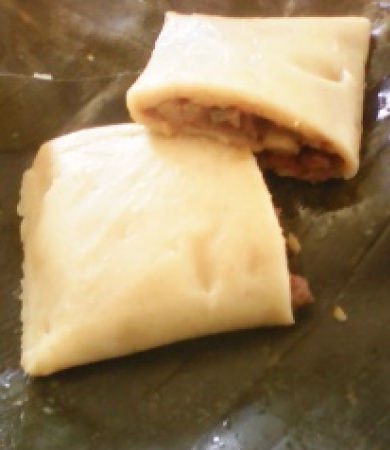
In this opportunity I present a traditional dish characteristic of the Christmas festivities in Venezuela, La Hallaca or Hayaca, which contains the historical evolution of our region, a rich tradition and familiarity.
Then I present a brief review of its origin and how to make this delicious dish with a beautiful photographic memory. I hope you like it…!
Where does it come from?
La Hallaca is a Venezuelan native dish of which there are many versions of its origin, one of which is the one that reviews on its website the Correo del Orinoco of which I quote:
The origin of the dish dates back to the years of colonization by Spain, XV century and XVI century, attributing its invention in legendary form to slaves and indigenous servants, who collected the remains of the preparations of their oppressors to build a plate heterogeneous that served them as extra food to their usual meals ... The tradition tells that at Christmas, which the creoles used to celebrate with great pomp and feasts of all kinds, the Bishop of Caracas enraged by these customs, he exhorted them to eat as Indians who worked on the "Camino de los Españoles", with hallacas or scones or tamales filled with leftovers.
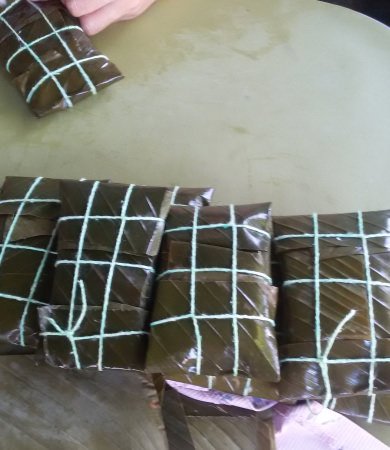
In this way, the creation of a variety of recipes was started, each one with some varieties related to culinary touches typical of each region of Venezuela where it is made, which enriches the tradition during the Christmas Holidays.
What is the Hallaca?
In an essay made in 1954 by the Venezuelan writer Arturo Uslar Pietri, called La Hayaca as a History Manual, he gladly explains our Mestiza History from this delicious dish, referring to the cultural biodiversity of which we are a consequence, I quote:
On its cover is the banana leaf. The African and American banana, in which the black and the Indian seem to open the courtship of flavors. Then there is the shining mass of corn. The corn of tamale, tortilla and chicha, which is perhaps the most American of the plants ... In gooseflesh, olives and raisins is Spain with its Iberian, Roman, Greek and Carthaginian history. In slow successive invasions these foods arrived in the peninsula ... in the saffron that colors the dough and in the almonds that adorn the stew are the seven centuries of the Muslim invasion ... from medieval Europe to the fabulous East of riches and refinements is in the sharp and concentrated brevity of the clove.
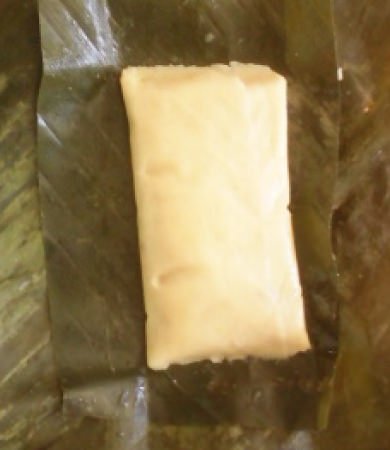
This conception of the Hallaca, is not far from the current reality, we define it as a cornmeal cake, colored with onoto (or vegetable yellow color), filled with a stew prepared with meat (beef, chicken, pork, chicken) , vegetables, spices and wine, which gives the rich Christmas aroma, wrapped in bijao leaves and tied with wick. It is a dish to enjoy any month of the year, especially at Christmas.
This year, the family decided to make the hallacas with beef and pork, a delight :)
Elaboration process
For the elaboration process of this exquisite dish, the reunion of the whole family is fundamental, since, from this, all the activities are planned, tasks are assigned, the budget is made, the money is contributed and all are bought the ingredients. For this, the meeting point is the maternal home of my dear mother. This year, the amounts mentioned below were taken considering the members in the family and the time for its preparation was 4 days
It is important to emphasize that, the recipe and preparation mentioned below, are part of our family tradition, so, it is possible that some ingredients do not match other recipes from the rest of the country, thus, each family is free to decide delete or add ingredients.
Ingredients:
- 9 Packets of precooked flour (preferably PAN)
- 8 Kg Beef and 2 Kg Pork Meat
- 1½ Kg Onion head
- 1½ Kg between sweet or mysterious pepper and paprika
- ½ Kg Tomatoes
- 1 Kg between scallions and Garlic porro
- 1 Bunch of onion on branch
- 4 Kg Potatoes
- ½ Kg Carrot
- 3 heads of garlic
- 7 Laurel Leaves
- ½ Kg Olives and ½ Kg Capers
- ½ Kg Raisins and papelon to taste
- 2 Lts of oil (could be 3 depending on the taste of each family)
- Salt, marinade, 2 Lts of wine, English sauce, garlic sauce, soy sauce, onotado oil and mustard, all to taste.
- Bijao leaves (to wrap the hallacas)
- Wick (to tie)
Preparation:
Boil the leaves of bijao to soften them, rinse them, let them drain, dry and cut into large and small rectangles, store them in tightly closed bags in the fridge, this will serve to wrap the hallacas.
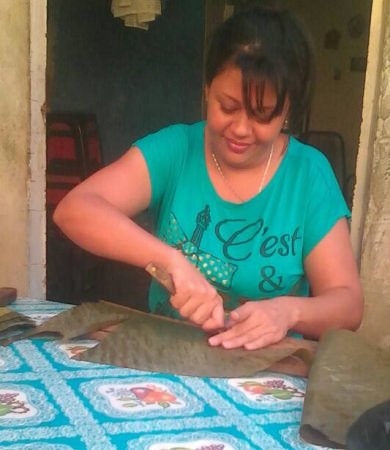
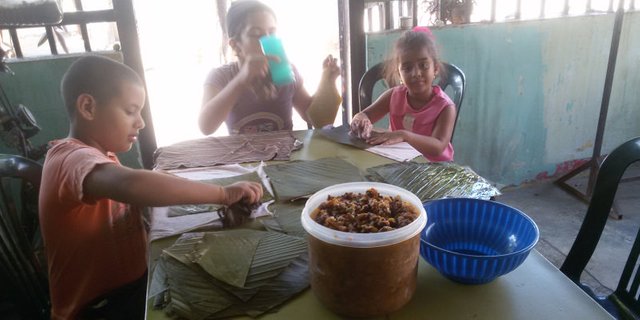
Subsequently, the beef and pork, season with garlic, salt, marinade and onoto and fry them, then cut them into pieces and reserve.
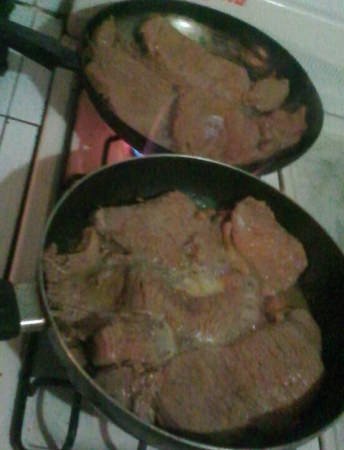
Cook and cut the potatoes and carrots in small cubes, reserve.
Cut into small pieces and separately: the onion head, sweet pepper and paprika, tomatoes, scallions and garlic porro, the onion on branch, reserve everything.
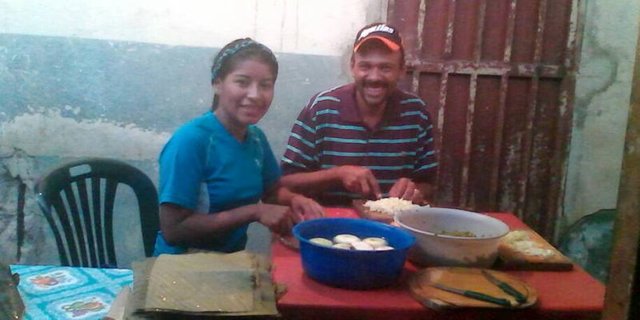
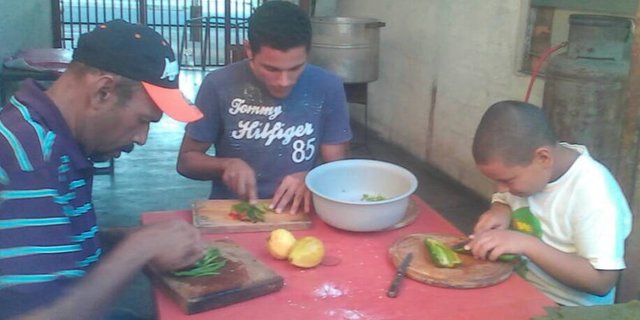
Cut the olives and capers in two parts.
The raisins are placed whole.
The stew:
After heating the oil in the cauldron, add the onion head and garlic to sauté until the onion is transparent; then add the tomatoes, sweet pepper and paprika, scallions and garlic porro, the laurel leaves, the meat, part of the wine and the papelon; let cook until the meat is soft.
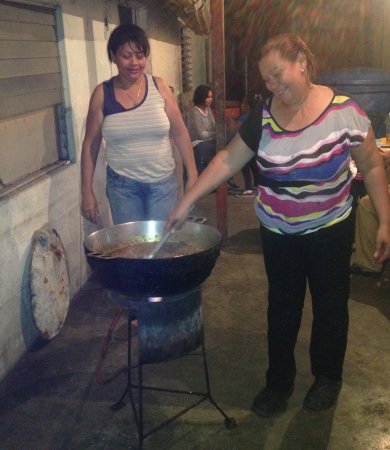
Next, add the olives and capers, potatoes, carrots and raisins, season with salt, marinade, English sauce, garlic sauce, soy sauce, onoted oil and mustard, finish adding the wine and finally add the onion branch, if necessary add a little more oil, check the seasoning and turn off. Stew Ready ...!
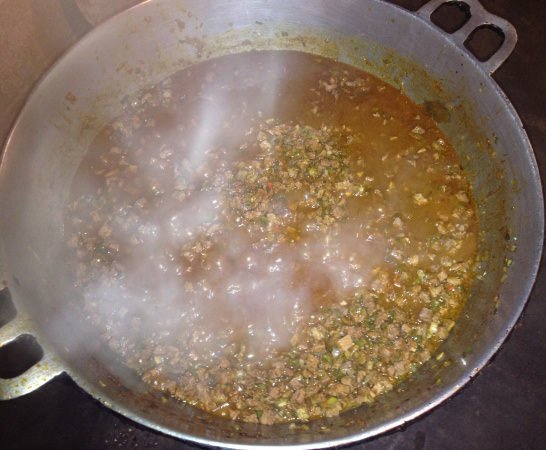
Let it rest until it cools, so it can be placed in several containers, let them cool and store in the fridge.
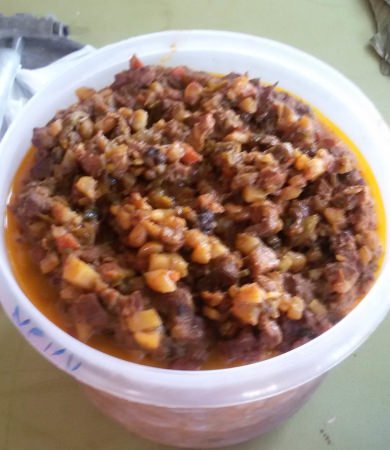
Important: the oil must be generous, since, by allowing the stew to cool, it absorbs a good quantity; especially when, after doing the hallacas, they go to the freezer until they are cooked.
For cooking, if the hallaca is not frozen, place it in boiling water for a period of 15min, if they are frozen let them boil for 2omin approx. After this time, remove them from the water and let them drain, remove the bijao leaf and serve ... Bon appetit!
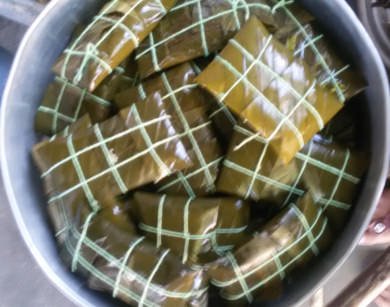
Making Hallacas:
You must knead the precooked flour, to which you must add salt, oil onotado or yellow vegetable color, to give it color.
On the table we must have bijao leaves (previously dried with a soft cloth), oil, stew, wick, blades and scissors to cut the wick; and of course the Joy of being in Family.
Place oil on the leaf of bijao, as you can see, you have a large leaf and on top of a small one, this to protect the flour
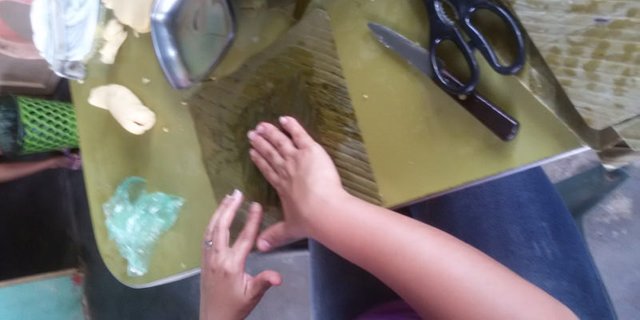
Place the previously crushed flour
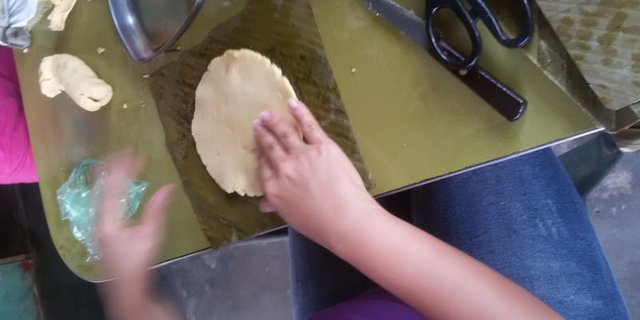
Decrease the thickness to taste
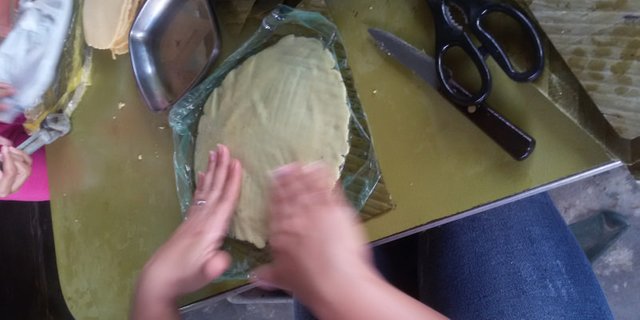
Add the stew and give it a rectangular shape
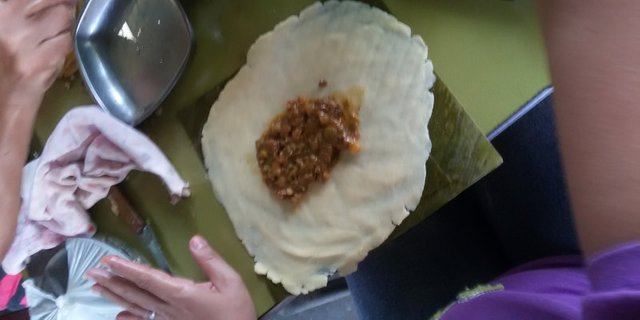
With the help of the leaf wrap the stew with the flour
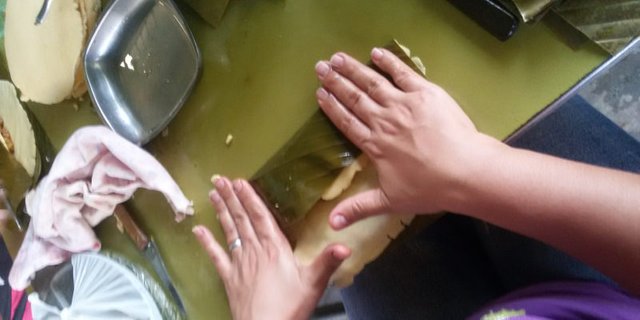
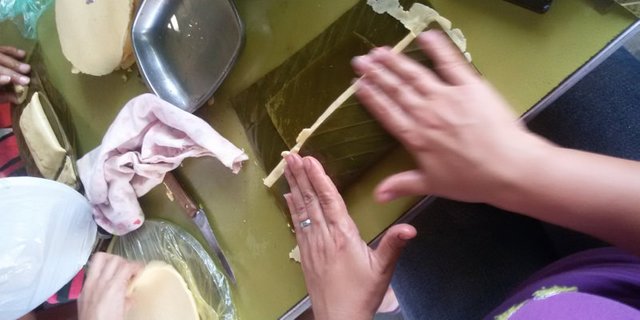
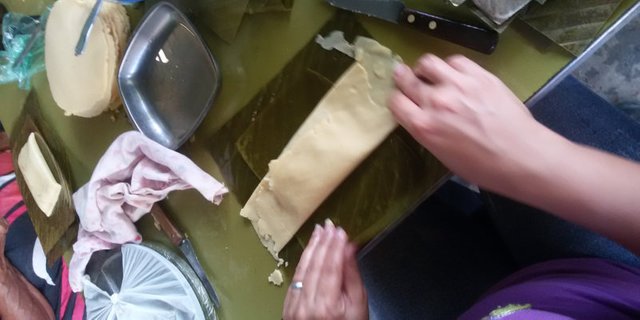
Remove the remaining flour with the help of a table knife
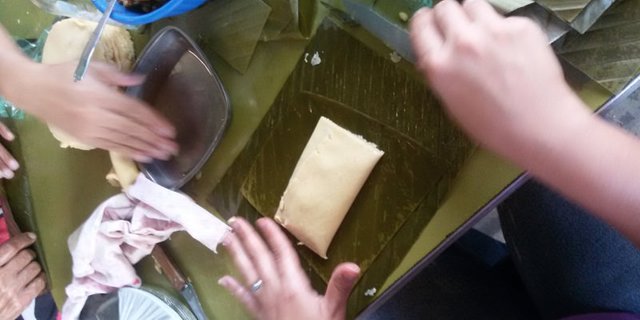
Wrap with bijao leaf
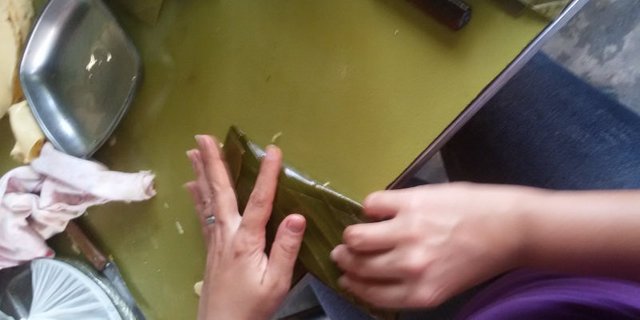
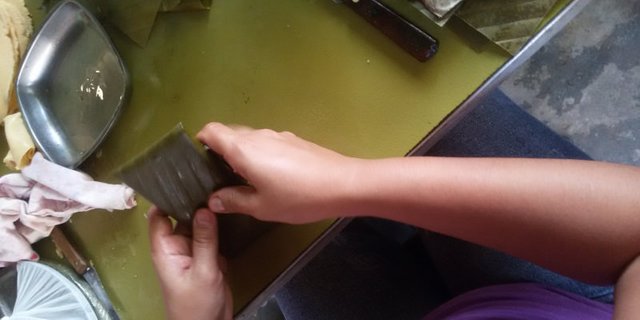
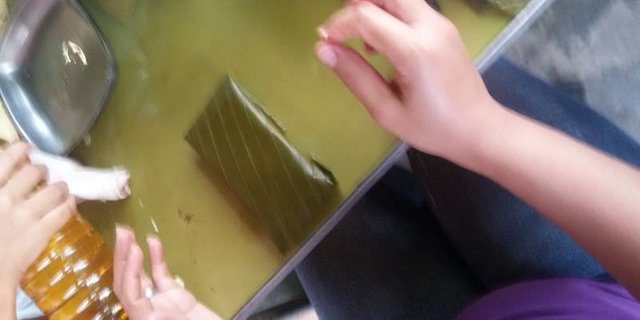
Tie with the wick and Ready!
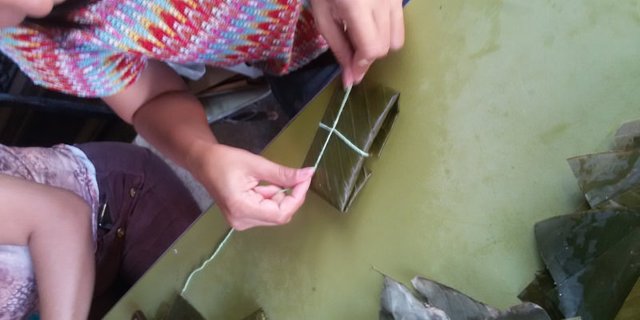
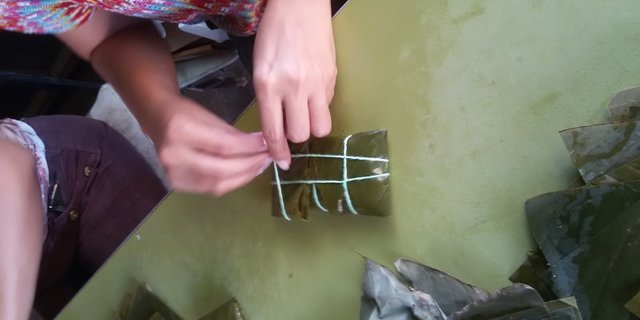
After the hallacas of the first batch are ready, 2 or 4 are boiled, to taste and to know if the stew is finally well or if it is necessary to correct it.
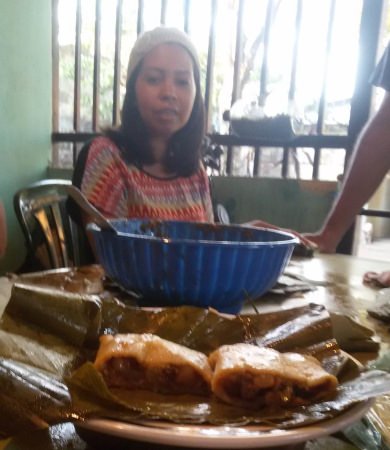
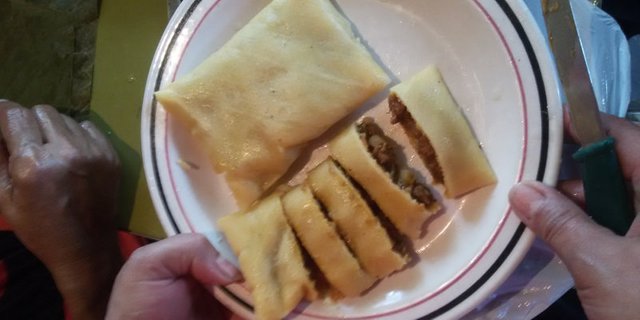
A flavor full of meanings ...
For us there is no Christmas if we do not meet for the preparation of this delicious dish.
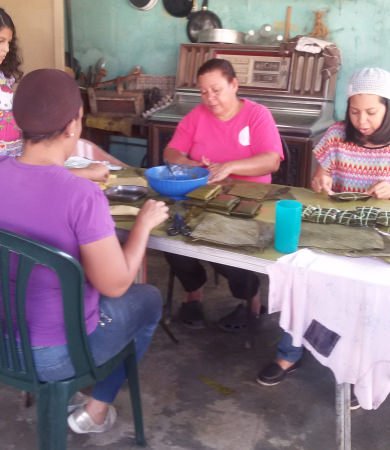
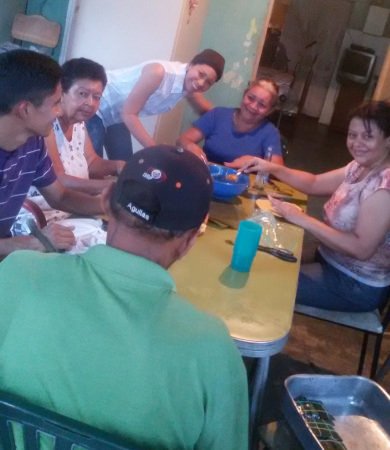
It is Rich because: it's made in Family
This allows us:
Celebrate and share anecdotes and experiences.
Know the new members of the family, whether by birth or marriage.
Strengthen family ties and values such as love, solidarity, responsibility, faith, joy, union and more ...
Remember the loved ones who have already left this earthly world, taking into account their valuable teachings
I think I still fall short, there are so many feelings and emotions that are experienced when we gather as a family to make the hallacas our meeting point.
I hope that this story of life that I just told you, is an inspiration for you and your family to reproduce it, maybe not with the hallaca, you can use any other dish that you like, the important thing is to do it together.
And you will see that enjoying with the family is priceless ...!
Créditos:
To my cousins Daylin and Richard for their contributions, to all the family that participated and allowed to document this wonderful process, my aunts Yonaira and Emeredi, who prepared this delicious stew; As for the photographs, I thank my daughter Naybelis, my cousins Yolis and Daliber, and my sister-in-law Yolisber who helped me make this photographic memory. To all and many thanks and blessings.
If you have any comments, suggestions or questions, write to me and I will gladly answer you.
Thanks for taking the time to read these lines,

Free image available on the site freepik
El plato principal de nuestras navidades, y lo mejor es que lo preparaste en familia.
así es, en unión familiar nos fortalecemos, gracias @frankjavier por apreciar esta publicación, feliz día y próspero 2018!